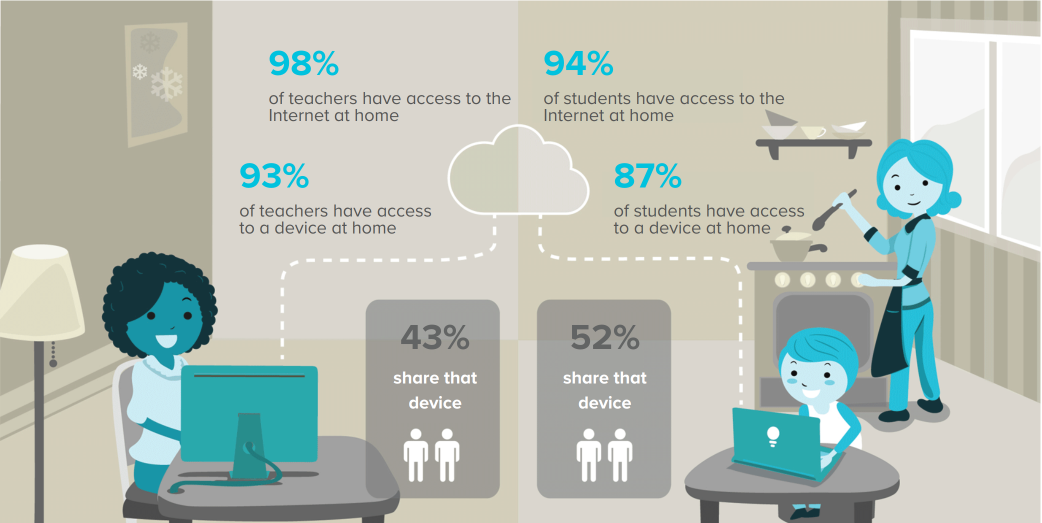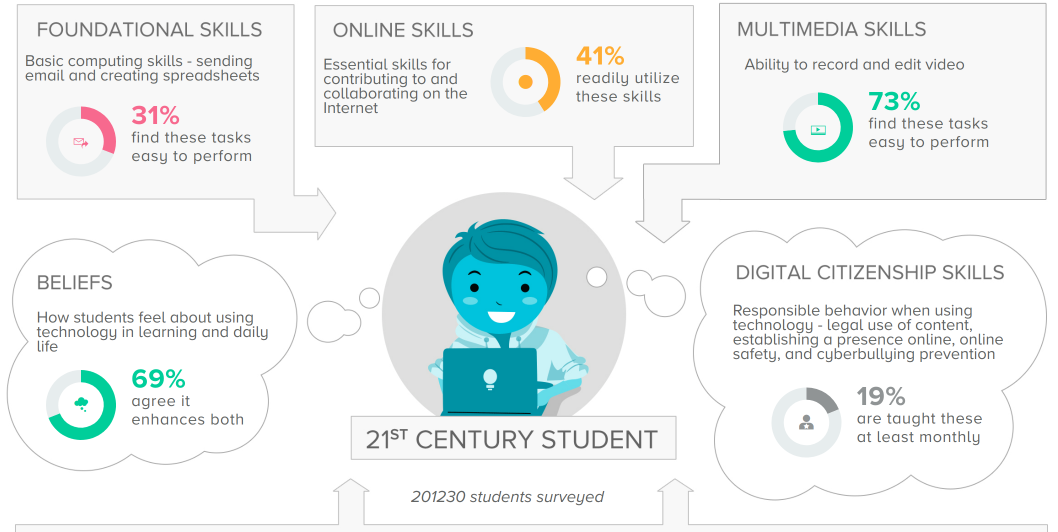Without reflection, we go blindly on our way, creating more unintended consequences, and failing to achieve anything useful... Margaret J. Wheatley I am currently participating with a cohort group in ISTE’s Educator Certification course, and consequently have a number of required opportunities for reflection. One of the reasons (inspired by George Couros) that I began blogging again is to reflect ‘out loud’ as a part of my own learning, (Hopefully the sporadic appearance of my posts is more an indicator of my own lack of discipline when it comes to writing than it is of how frequently I think about new learning)
I selected two activities related to the Standards for Educators to complete in the module on Digital Citizenship. The first related to indicator 3d of the Citizen standard: Model and promote management of personal data and digital identity and protect student data privacy. The activity included a review of the privacy policies of several software tools and applications. Like most people I know, my tendency is to simply click ‘agree’ without bothering to read what it is that I’ve agreed to. While my behavior is not likely to undergo a radical change, I am more cognizant about what is typically contained in these agreements, and I do consciously make a decision about accepting the terms. This is important when it involves a personal choice to use a tool, but it is critical when making a choice or recommendation for tools to be used by others, especially when the users are students. I’ve also become more intentional about reading/researching perspectives on privacy, such as this recent Edsurge Podcast - ‘Prohibition Will Get You Nowhere’. My second activity related to indicator 2b of the Leader standard: Advocate for equitable access to educational technology, digital content and learning opportunities to meet the diverse needs of all students. This activity involved a review of our regional BrightBytes data, and is the topic of my recent post, Equity Matters. The main takeaway is that equity involves access to more than technology or digital tools, but access to classrooms and teachers who routinely provide meaningful opportunities for students to extend or enhance their learning through the effective use of the available technology. The first of the 5 ISTE Standards for Leaders calls educators to be advocates for Equity and Citizenship: Leaders use technology to increase equity, inclusion, and digital citizenship practices. Most discussions of equity tend to center around access to devices and to the internet. Phrases such as "the digital divide" imply that there are those who have access to technology and those who do not, and while there are some who do not have access to devices or to the internet either at home or at school, the number is surprisingly low. During the 2017-18 school year more than 200,000 students in Region 10 responded to the BrightBytes Technology and Learning survey. 94% indicated that they have access to the internet at home, and 87% indicated they had access to a device at home. Of the more than 20,000 teachers and administrators who responded, 87% stated that they have or can get access to devices for students when needed, and 67% indicated that student devices were available at a minimum of a 2:1 ratio. While there is some variance in the robustness of both devices and infrastructure, the difference in levels of access is actually more of a continuum than a gap. Two of the indicators for the Equity and Citizenship Advocacy standard for leaders are to:
There are any number of factors contributing to this lack of opportunity for students' learning to be empowered by technology: lack of teacher efficacy, test-based accountability systems, prescribed coverage of curriculum in sequence governed by time rather than by mastery, and lack of priority by leadership to name a few. As leaders we bear the responsibility of not only advocating for equity in opportunity, but in creating a culture where teachers and learners are empowered to use technology in innovative ways to enrich teaching and learning. If we don't, who will?
Several years ago one of our superintendents made the observation that I was addressing the lack of communication/collaboration between instructional and technology staffs from a deficit model. What he meant was that my focus on what was not working was limiting my capacity to explore positive and innovative solutions. His comment reminded me of the importance of maintaining a mindset of abundance.
A deficit model operates from a perspective of fear and/or control, and results in a culture of compliance rather than a culture that inspires students to positively contribute to and responsibly participate in the digital world. The immediate, global, and permanent nature of the digital world does necessitate some boundaries and safeguards - we don't want to toss learners into the deep end of the pool before they know how to swim. but neither do we want them to never leave the baby pool. The ISTE standard for students as digital citizens describes students who recognize the rights, responsibilities and opportunities of living, learning and working in an interconnected digital world, and who act and model in ways that are safe, legal and ethical. This standard is supported by the standard for educators who
|



 RSS Feed
RSS Feed